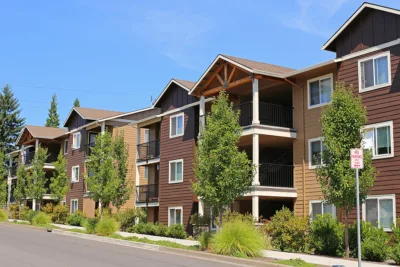Rob Rowsell took a question from a small apartment investor looking to move up. Let Rob explain the ins and outs on how to buy large multifamily properties. When it comes to rental property investing, Rob has the answers!
 Are You Ready To Buy Large Multifamily Properties?
Are You Ready To Buy Large Multifamily Properties?
Jelisa had gained experience in real estate by investing in apartments with very few units. She thought that she was ready to move up to larger properties. However, the sheer sizes of the apartment complexes she was eying up was were intimidating. Was she really ready to buy large multifamily properties? She asked Rob for some pointers on how he put his education to work and tackled his fears during growth periods.
Rob asked for clarification. Jelisa was looking to sell her triplex and move up to a 16-75 unit dwelling. She instead was looking at a 15-unit complex, due to the sizes of the larger complexes on her list. Essentially, she hoped to baby step up to triple-digit unit dwellings by starting with some double digit ones. She set her focus over the last few months on education, specifically on the expenses and unexpected challenges of large multifamily properties.
Rob’s Advice
Since Jelisa explained that she was selling her triplex to move up and buy large multifamily properties, Rob talked about timing. Before buying a dwelling of 16 or more units, she would need to get her ducks in a row to find a buyer, and let the large dwelling seller know about the sale. Then, there is the matter of securing loans and escrow for the new property once she chooses it.
Jelisa explained that she found many options for financing, with varying risk factors. Rob explained that the potential price of a 16-plex in Jelisa’s home state of South Carolina meant her loan amount would be under $1 million. Therefore, she would need to reach out to a local lender for the loan, rather than a federal lender. This would mean a higher interest rate, but would also provide some much needed flexibility. Explore both credit unions and local banks to see which provides the best options.
Join Our Multifamily Investing Community Today
Do you own your own multifamily rental properties? If not, do you plan to do so one day? Then you should consider joining our online financial group, the ATL Inner Circle Community! Each month, investing pro Rob Rowsell will teach you what you must do in order to build wealth in the real estate business. It’s not quite as easy as it looks! Property taxes, liens, and legal fees can all be hard to navigate, so having a successful guide in your corner like Rob is a must! Sign up today!

 Commercial Real Estate Cap Rates And Property Values Explained
Commercial Real Estate Cap Rates And Property Values Explained Residential or Commercial Investment? You May Not Have A Choice!
Residential or Commercial Investment? You May Not Have A Choice!